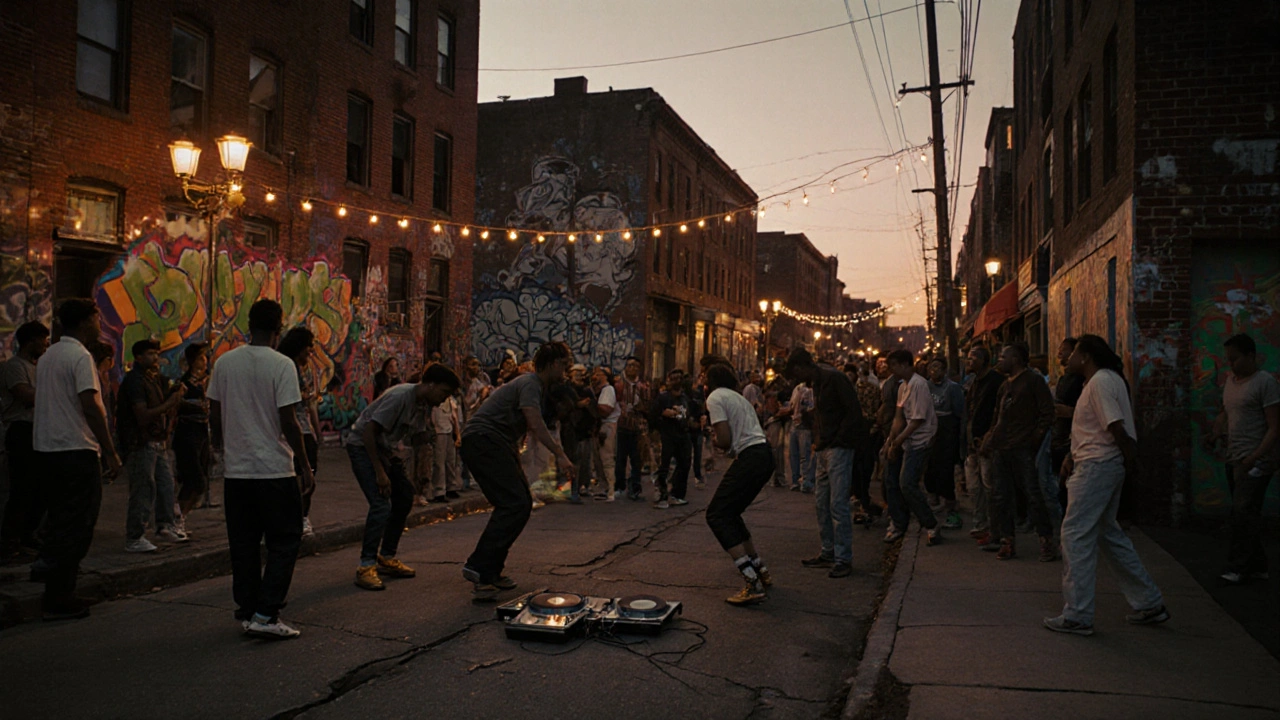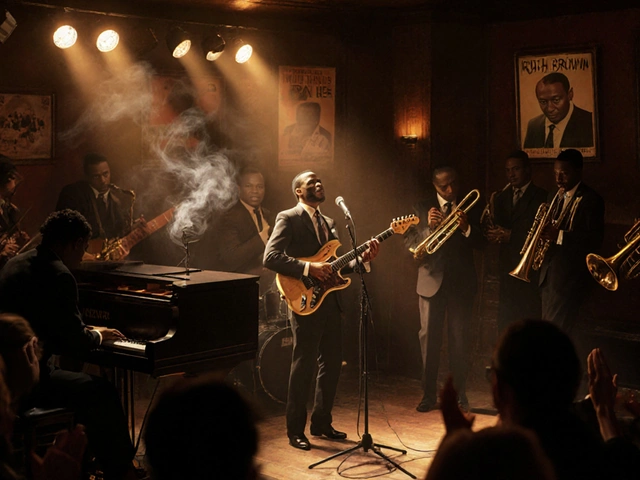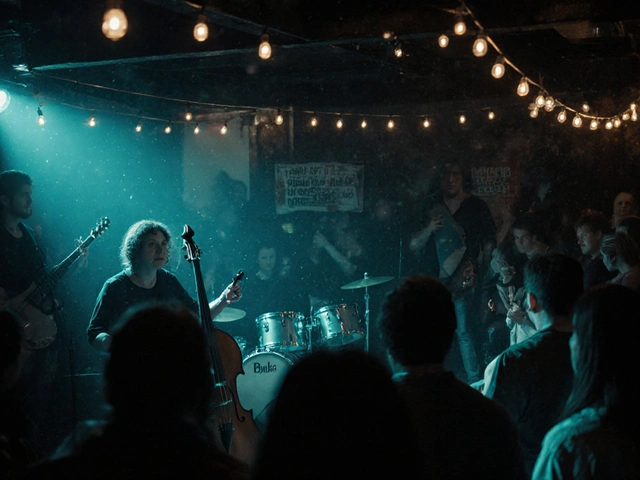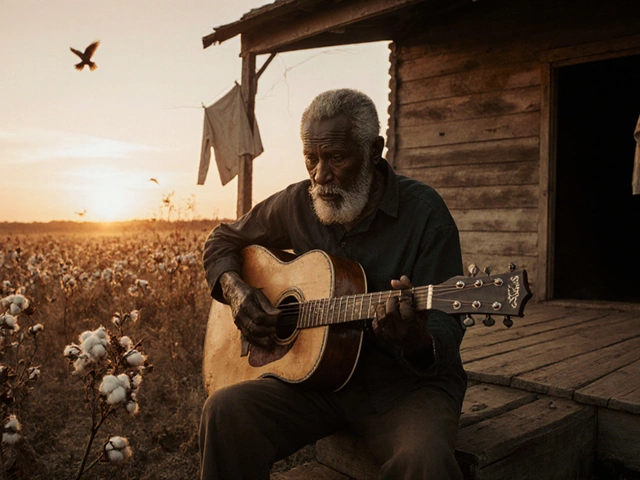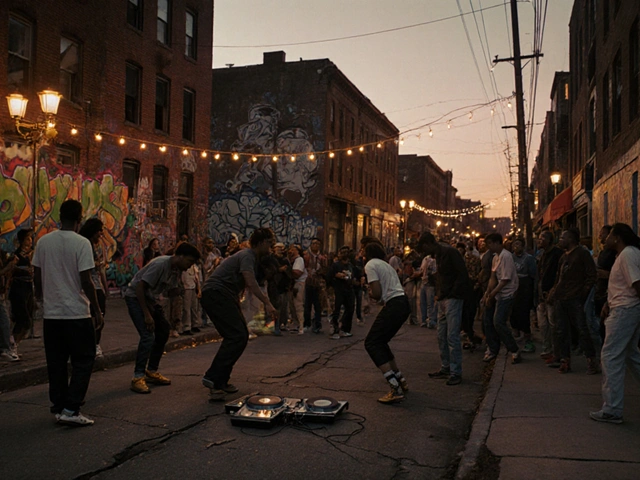When you hear hip hop, what comes to mind? Maybe booming bass, fast-talking rappers, or flashy music videos. But hip hop isn’t just a genre-it’s a living, breathing culture that started in the Bronx in the 1970s and turned into a global force. It’s about more than beats and rhymes. It’s about survival, expression, identity, and change.
The Roots: Block Parties and B-Boys
In 1973, DJ Kool Herc threw a back-to-school party at 1520 Sedgwick Avenue in the Bronx. He didn’t just play records-he stretched the breakbeats, the most danceable parts of funk and soul songs, using two turntables. That simple trick gave birth to what we now call hip hop. Kids started dancing in circles-those were the B-boys and B-girls. Others began rhyming over the beats, calling themselves MCs. Graffiti artists tagged walls with bold letters, turning subway trains into moving canvases.
This wasn’t entertainment for fun. It was a response to neglect. The Bronx was burning. Buildings were abandoned. Jobs vanished. The city pulled funding for parks, schools, and recreation. Young people didn’t have money for instruments or studios. So they used what they had: turntables, spray paint, and their voices. Hip hop wasn’t created in a lab. It was forged in the streets.
The Four Elements: More Than a Checklist
You’ll hear people say hip hop has four elements: DJing, MCing, breaking, and graffiti. But calling them "elements" makes it sound like a menu. It’s not. These were survival tools. Each one served a purpose.
- DJing wasn’t just mixing tracks-it was reclaiming sound. DJs took records from Black and Latino communities and made them the soundtrack of a generation.
- MCing started as crowd control-"Ladies and gentlemen, the party’s just getting started." But soon, MCs told stories about life in the projects, about police harassment, about missing fathers, about dreams too big for the block.
- Breaking was physical poetry. No one had dance studios, so they used concrete floors. The moves-toprock, footwork, freezes-were about showing strength without violence.
- Graffiti was visibility. If your name wasn’t on the news, you wrote it on the wall. Names like TAKI 183 and CORNBREAD became local legends because they refused to be ignored.
These weren’t separate hobbies. They fed each other. A breakbeat inspired a dance move. A graffiti tag became a symbol for a crew. An MC’s rhyme told the story behind the art. Together, they built a culture that didn’t need permission to exist.

From the Streets to the Charts
By the mid-80s, hip hop was on the radio. Run-D.M.C. wore Adidas and rocked leather jackets, not gold chains. They didn’t just rap-they made hip hop sound like it belonged on rock radio. "Walk This Way" with Aerosmith? That wasn’t a gimmick. It was proof that hip hop could cross lines people said were unbreakable.
Then came Public Enemy. Their albums didn’t just have beats-they had manifestos. "Fight the Power" wasn’t a song. It was a call to arms. Chuck D didn’t rhyme to be cool. He rhymed because he knew words could change how people saw themselves. Meanwhile, N.W.A. screamed about police brutality in Compton. "F*** tha Police" got banned. But it also got heard. Millions of kids who’d never been stopped by cops suddenly understood why someone would be angry.
By the 90s, hip hop split into East Coast and West Coast. Not because of geography-but because of stories. Nas painted portraits of Queensbridge life. The Notorious B.I.G. told tales of survival in Brooklyn. Tupac didn’t just rap-he wrote poems about mothers, prisons, and love. When he died in 1996, it wasn’t just a rapper gone. It was a voice silenced.
Hip Hop as a Mirror
Today, hip hop is the most listened-to genre in the U.S. It’s on TikTok, in commercials, in political rallies. But the core hasn’t changed. It still reflects what’s happening in the margins.
In 2020, after George Floyd’s murder, artists like Kendrick Lamar and J. Cole didn’t wait for permission to speak. They dropped tracks that named names, called out systems, and gave space for grief. That’s what hip hop always does. It doesn’t wait for the news cycle. It becomes the news.
Look at UK drill. It started in Chicago, but in London, it became something else. Artists like Headie One and Dave used it to talk about knife crime, housing shortages, and the loneliness of growing up in council estates. The beats are darker. The flows are tighter. The pain is real. And it’s not just music-it’s testimony.
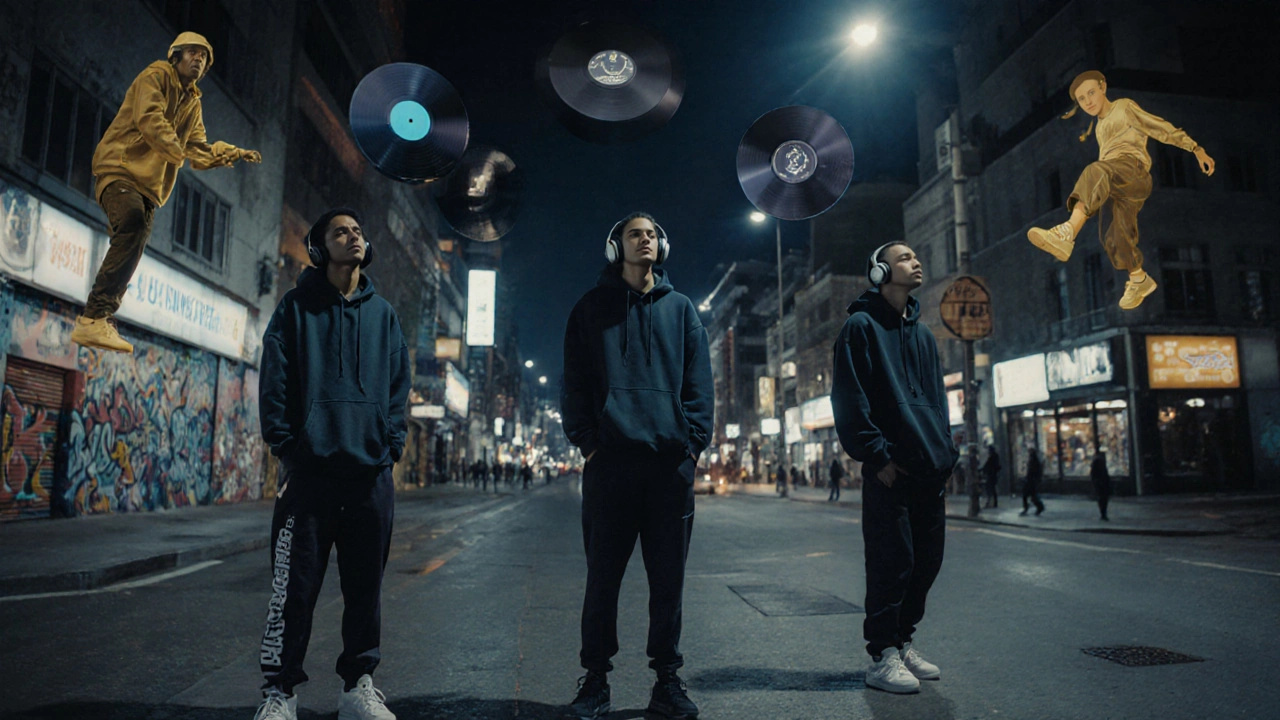
It’s Not Just Music-It’s a Language
Hip hop taught the world how to speak differently. Slang like "dope," "lit," "flex," "vibe"-all came from rap lyrics. The way people walk, dress, gesture? That’s hip hop too. Hoodies, sneakers, chains-these weren’t fashion trends. They were statements. A pair of Air Force Ones meant you didn’t have much, but you still had pride.
Even in places like Japan or South Africa, kids don’t just copy American rappers. They adapt. In Japan, rappers rhyme in English and Japanese, blending traditional poetry with street talk. In South Africa, artists use local languages like Zulu and Xhosa to talk about inequality, corruption, and hope. Hip hop doesn’t spread-it transforms.
The Real Legacy
People talk about hip hop as if it’s just about money now. Billion-dollar brands, luxury cars, billion-stream hits. But if you listen closely, the best hip hop still carries the same weight it always did.
When Noname raps about grief and healing, she’s not performing. She’s remembering. When Tyler, The Creator talks about being queer in a hyper-masculine space, he’s breaking walls. When Little Simz says, "I’m not here to entertain, I’m here to elevate," she’s speaking for everyone who ever felt invisible.
Hip hop didn’t just change music. It changed how we see ourselves. It gave voice to people who were told to stay quiet. It turned pain into power. It made poetry out of struggle.
So next time you hear a hip hop beat, don’t just tap your foot. Listen deeper. There’s a whole world in those bars.
What made hip hop different from other music genres when it started?
Unlike other genres that relied on formal training or expensive instruments, hip hop was built with whatever people had-turntables, microphones, spray cans, and concrete floors. It didn’t need approval from record labels or music schools. It was created by young people in marginalized communities as a way to express their reality when no one else would listen.
Is hip hop still political today?
Absolutely. While mainstream hip hop often focuses on wealth and fame, the underground and independent scenes still use the genre as a tool for activism. Artists like Killer Mike, Noname, and Run the Jewels consistently address police violence, mass incarceration, and economic inequality. Even in countries like Brazil and France, hip hop artists are leading youth movements against systemic racism and poverty.
Why do some people say hip hop "sold out"?
The idea that hip hop "sold out" comes from the shift in the 2000s, when corporate labels pushed flashy, materialistic imagery to sell records. But that’s not the whole story. While some artists embraced commercialism, others doubled down on authenticity. The genre never lost its soul-it just got bigger. Today, you can find both: chart-topping hits and raw, underground tracks that still speak truth to power.
Can you learn hip hop culture without rapping?
Yes. Many people engage with hip hop through breaking, graffiti, DJing, or even studying its history. You don’t need to rap to understand its values-resilience, creativity, self-expression, and community. Learning the history of block parties, the evolution of graffiti styles, or how DJs pioneered sampling is just as valid as learning flows and rhymes.
How has hip hop influenced fashion globally?
Hip hop turned streetwear into high fashion. Brands like Adidas, Nike, and Puma became global giants because of hip hop’s influence. Baggy jeans, oversized jackets, gold chains, and sneakers weren’t just trends-they were symbols of identity. Even in countries like South Korea and Nigeria, young people wear hip hop-inspired clothing not because it’s trendy, but because it represents resistance, individuality, and pride.

